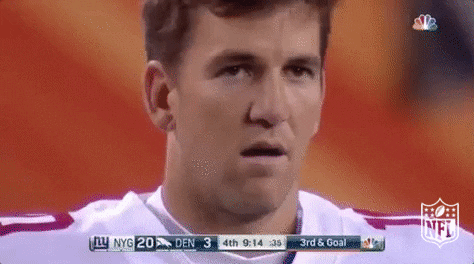- Thread starter
- #1
richig07
Well-Known Member
... a positive TD/INT ratio until 1984. The push over the hump to a collective positive TD/INT% was facilitated by Dan Marino's historically monstrous statistical season. Which really puts into perspective how phenomenal it was.
The next year the NFL would return to a negative collective TD/INT ratio. In 1992, it occurred for the final time.
Furthermore, into the late 70's the NFL would see seasons where the cumulative INT% was near 6.0% on average. Today, it sits at nearly 1/3 of that at 2.2%.
During the SB era; entering every decade the league's average passer rating was:
1970: 65.6
1980: 73.7
1990: 77.3
2000: 78.1
2010: 84.1
2019: 92.3
Upward trends really begin at the end of the 2000's (rating was just barely at 80.0 flat in 2006 and CMP% at 59% where it's now at 65%) and it takes on an even bigger spike in the mid-10's. To me... the noticeable breakthrough was 2011 after some rule changes with points of emphasis and 3 QB's finishing around 5K in yardage. Which was facilitated further by the arrival of Wilson/Kaep into the NFL as starters in 2012 and the spread offense slowly becoming mainstream.
www.pro-football-reference.com/years/NFL/passing.htm
I thought this shit was interesting for no reason. Really puts into perspective why comparing QB numbers across eras is stupid. It also puts into perspective why I hate hearing about how (insert QB here) has better numbers to begin his career than Manning, Brady, Favre, Young, etc.
BTW... this thread should be referenced any time someone argues that Eli Manning belongs in the Hall of Fame for accumulating a bunch of empty calorie numbers to become top 10 all-time in a bunch of shit
The next year the NFL would return to a negative collective TD/INT ratio. In 1992, it occurred for the final time.
Furthermore, into the late 70's the NFL would see seasons where the cumulative INT% was near 6.0% on average. Today, it sits at nearly 1/3 of that at 2.2%.
During the SB era; entering every decade the league's average passer rating was:
1970: 65.6
1980: 73.7
1990: 77.3
2000: 78.1
2010: 84.1
2019: 92.3
Upward trends really begin at the end of the 2000's (rating was just barely at 80.0 flat in 2006 and CMP% at 59% where it's now at 65%) and it takes on an even bigger spike in the mid-10's. To me... the noticeable breakthrough was 2011 after some rule changes with points of emphasis and 3 QB's finishing around 5K in yardage. Which was facilitated further by the arrival of Wilson/Kaep into the NFL as starters in 2012 and the spread offense slowly becoming mainstream.
www.pro-football-reference.com/years/NFL/passing.htm
I thought this shit was interesting for no reason. Really puts into perspective why comparing QB numbers across eras is stupid. It also puts into perspective why I hate hearing about how (insert QB here) has better numbers to begin his career than Manning, Brady, Favre, Young, etc.
BTW... this thread should be referenced any time someone argues that Eli Manning belongs in the Hall of Fame for accumulating a bunch of empty calorie numbers to become top 10 all-time in a bunch of shit

Last edited:































